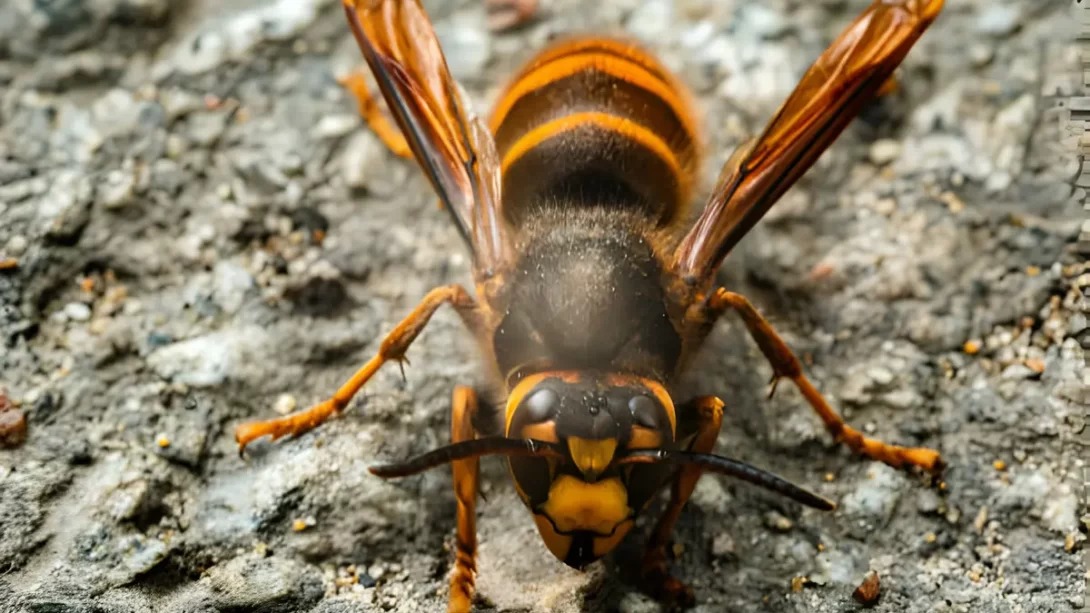When it comes to understanding the habitats of hornets, there are many misconceptions and general uncertainties. A common question is whether these insects live in the ground or elsewhere. This article aims to demystify the living habits of hornets, focusing on their nesting preferences and whether some species choose subterranean habitats.
Hornets
Hornets are a type of social wasp, larger and more robust than many other wasp species. They are distinguished by their size, distinctive markings, and more aggressive nature compared to bees and some other wasps. Hornet species are diverse, each with unique characteristics and behaviors. They are predominantly found in temperate and tropical regions, where they play a vital role in the ecosystem, primarily as predators of other insects.
Typical Habitats of Hornets
Hornets typically build their nests above ground. Their preferred locations for nesting include high up in trees, under eaves of buildings, or within shrubs. These nests are often constructed from a paper-like substance created by the hornets from chewed wood fibers mixed with their saliva. The environmental conditions ideal for hornet nests include areas that are sheltered from the elements, relatively undisturbed, and close to food sources.
Do Hornets Live in the Ground?
Contrary to some beliefs, certain species of hornets do create nests in the ground. These ground-nesting hornets are less common than their tree-nesting counterparts but are an important part of the hornet family. Species such as the European hornet (Vespa crabro) have been known to build their nests in cavities in the ground, often using existing holes like rodent burrows as a foundation.
The choice for subterranean nesting is influenced by several factors, including protection from predators and climate conditions. Ground nests are typically well-hidden and can offer a stable temperature environment, which is crucial for the development of hornet larvae.
Identifying Hornet Nests
Identifying hornet nests, whether in the ground or above, is crucial for coexisting safely with these insects. Above-ground hornet nests are often large, rounded, and made of a papery substance. They can be found hanging from trees, under eaves, or in other sheltered areas. Ground nests can be more challenging to spot, but signs include noticeable flying activity near the ground, particularly around an opening to a burrow.
When encountering a hornet nest, it’s important to exercise caution. Hornets can be aggressive when they feel their nest is threatened, and their stings can be quite painful. It’s advisable to keep a safe distance from any identified hornet nests and to avoid disturbing them.
Managing Hornets and Their Nests
Dealing with hornets and their nests, especially if they are close to human activity, requires careful consideration. For ground nests, one should look for increased hornet activity on the ground, such as hornets entering and exiting a hole. If removal is necessary, it’s often best to seek professional pest control services. These experts can safely remove or relocate the nest, minimizing the risks to people and the hornets.
For those who prefer to deter hornets from nesting in certain areas, there are preventative measures that can be taken. Sealing off potential nesting sites, like crevices in buildings or holes in the ground, can help. Additionally, maintaining a clean and tidy yard can make the area less attractive to hornets looking for nesting sites.
Managing Hornets and Their Nests
For those encountering hornet nests, especially near homes or frequently used areas, managing their presence becomes essential. Safety is the primary concern, as hornets can be aggressive if they perceive a threat to their nest. The best course of action often involves contacting professional pest control services. These experts can safely remove or relocate nests, minimizing the risk of stings. They are also trained to differentiate between hornet species and choose the most effective and humane method of control.
For individuals interested in preventing hornets from establishing nests in undesired areas, proactive measures can be taken. Regularly inspecting potential nesting sites, such as cavities in the ground or sheltered areas on your property, and sealing them off can deter hornets from settling. Additionally, reducing outdoor food sources, such as open garbage bins or pet food, can make the area less attractive to these insects.
Conclusion
In conclusion, while it is less common, certain species of hornets do create nests in the ground. Recognizing the signs of hornet nests, whether above or below ground, is crucial for safe coexistence. If nest removal is necessary, professional pest control services are recommended to handle the situation safely and effectively.
Understanding and respecting the ecological role of hornets is important. As predators, they play a vital part in controlling the populations of other insects. Therefore, managing hornet populations should be approached with a balance between safety and environmental consideration. By being informed about hornet behavior and habitats, individuals can take appropriate measures to protect themselves while minimizing disruption to the natural ecosystem.



